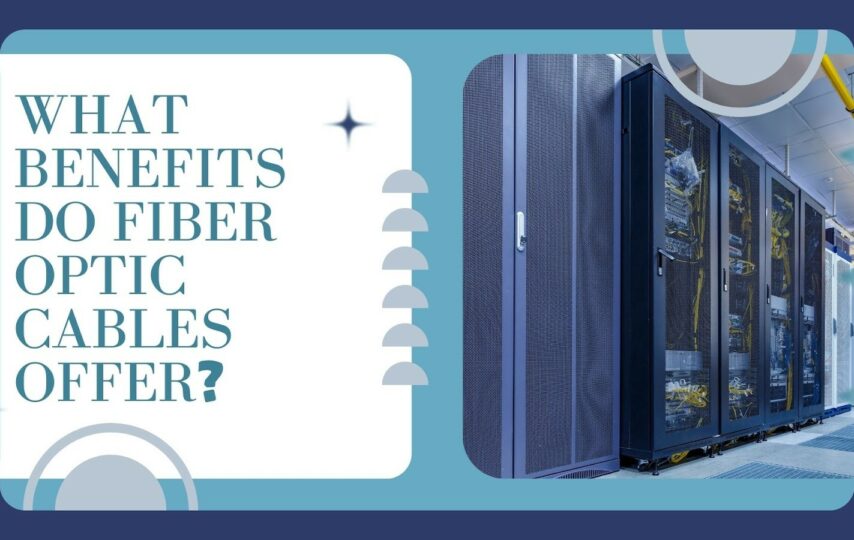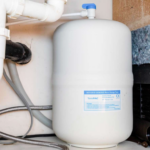Communication and data transmission exist in all realms and niches across industry, we use cables in order to transfer them. Fiber optic cable televisions, consisting of slim, adaptable hairs of optically pure glass or plastic, function as the avenue for transferring information via light signals. Data transmission through optic fibers happens 20 times faster than traditional cables. They tend to deliver information 10 times faster than satellite communication.
There is an increased demand for fiber optic cables in all places, including businesses and households.
The famous Jio fiber broadband service works based on fiber optic technology(single fiber optical fiber)which works better than traditional cables.
In this article, let’s explore the benefits of fiber optic cables, how they are implemented in the business field, and their installation process.
Are Optic Fibers Beneficiary?
Optic fibers ensure a wide range of benefits in many fields, there is a growing demand for data cable installation in businesses and homes. According to current trends, it shows that global optical fiber cable market is expected to reach USD more than 13 Billion by 2028 with a significant CAGR of 13.02 % from USD 6.3 Billion in 2022.
Increased Safety
The emission of electromagnetic signals affects the security and transmission of data. This can be overcome by using fiber optic cables because they provide secure data transmission, as they do not emit electromagnetic impulses. Thus you can find professionals in data cable installation Hollywood Florida who can assist you regarding optic fiber installation, structured cabling, CCTV installations, audiovisuals, access control systems, and much more clearly.
Minimises Effort
Installing optic fibers in the workplace or home is way easier than traditional cables, as it is lightweight and thin and can be easily installed, also less-time consuming as well in both commercial and residential settings.
Connectivity Across Extensive Areas
Optic cable fibers ensure connectivity across long-distance and also manage data integrity for all large business sectors as well. This is how Hollywood Florida overcame signal loss and maintained data integrity and developed their networks widely.
Parallel Data Transfer
If the bandwidth capacity is good it automatically leads to better internet connectivity and enhances productivity, where optic fibers manage to provide faster internet connections, smoother video conferencing, and enhanced cloud-based applications, ensuring optimum productivity and efficiency due to high bandwidth capacity.
Future Proof
Optic cables are future-proofed because they are capable of managing and integrating technologies and higher data expectations. Thus, Optic cables are highly beneficiary when compared with traditional cables.
Installation of Fibre Optics in Household Areas
Optic cable fibers have been installed mostly in all homes in Florida where those people were experiencing uninterrupted faster internet connection, uninterrupted and clear video calls, and living a better household experience.
Meets Distinct Demands
Optic fibers are of different types, which compensate for the expectations of consumers including business and home areas, and provide uninterrupted transmission of data.
Choose the Perfect Connection for Specific Needs (Types of Fibers)
Single Mode Fibre Optic Cable
In single-mode fiber optic cable, transmission occurs through a single fiberglass strand in the form of light pulses.
Long Distance Data Transmission
In the cosmopolitan area, urban areas, between cities(extensive connections are required), and telecommunications where data needs to be transferred in a faster and uninterrupted manner there single mode fiber optic cables are best recommended because of their core diameter which is around 9 microns that enables efficient data transfer
Multi-Mode Fiber Optic Cables
The difference between single-mode and multi-mode optical fibers is that multi-mode optic fiber is surrounded by a cladding with a diameter of 125 µm.
Short Distance Data Transmission
It has the ability to provide multiple modes of travel, mostly in school areas or within the buildings(around 300 to 400 meters), storage devices and multi-mode optic fibers are used. Has a larger core diameter of around 50 to 62.5 microns.
Things to Consider Before Installation
In order to choose the appropriate type for your workspace or house you need to focus on these aspects,
- First, consider whether you need a network along short distance or long distances, and make your preference accordingly.
- Second, remember high bandwidth tends to provide high data transfer when compared to multi-mode provides low bandwidth(limited).
- Third, multimode fiber cable optic cables are cost-effective and work around short distances, multimode optic fibre is expensive but makes long-distance data transfer effective.
Finally, consider all the factors and decide what fits your demand.
Adaptability for Future Demands
This optic fiber has inherent scalability, thus there are no limits for data transmission because a higher bandwidth thus ensures it is future-proof to meet up with future demands. It also provides relevance in longer period usage of optic fibers and there will be no decline in performance.
Wrapping up
In this electronic era, fiber optic cables stand as a beacon of future-proofing by using this we can actually get our data transferred effectively and it also ensures security and safety for the data.
As the need for faster and also a lot more reputable information transmission remains to rise, fiber optic wires stay an essential part of contemporary interaction networks. They encourage smooth connection, unlock limitless opportunities for data-driven advancement plus place Hollywood, Florida as a center of technical progression in the world of information wire installment.
FAQ
1. What are the benefits of optic cable?
Optic cables provide various benefits, such as enhanced security, minimized effort, extensive connectivity, parallel data transfer, future-proofing, and meeting unique expectations.
2. Optic fibres are cost-friendly?
multimode fiber cable optic cables are cost-effective works around short multimode fibre cable optic cables are cost-effective
works around short distances, multimode optic fibre is expensive but makes long-distance data transfer effective.
3. Multimode fibre cable optic cables or single-mode fibre cable optic cables- the best?
It depends on whether you need a network along a short distance or long distance, make your preference accordingly. Remember high bandwidth tends to provide high data transfer when compared to multi-mode provides low bandwidth(limited). Multimode fiber optic cables are cost-effective and work well for short distances, while single-mode optic fiber is more expensive but enables effective long-distance data transfer. Finally, consider all the factors and decide what fits your demand.
.








